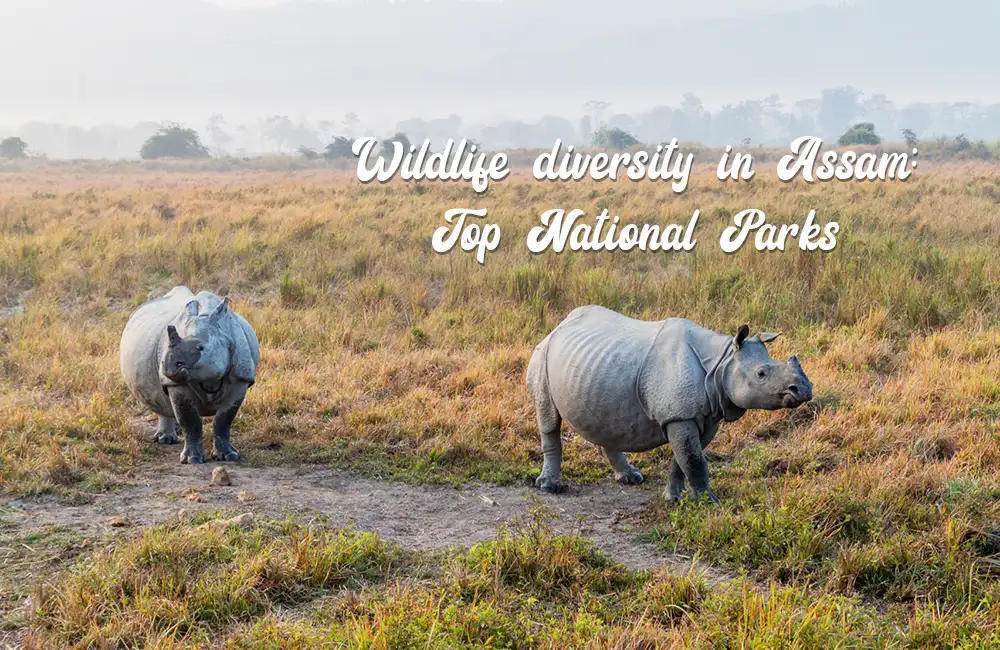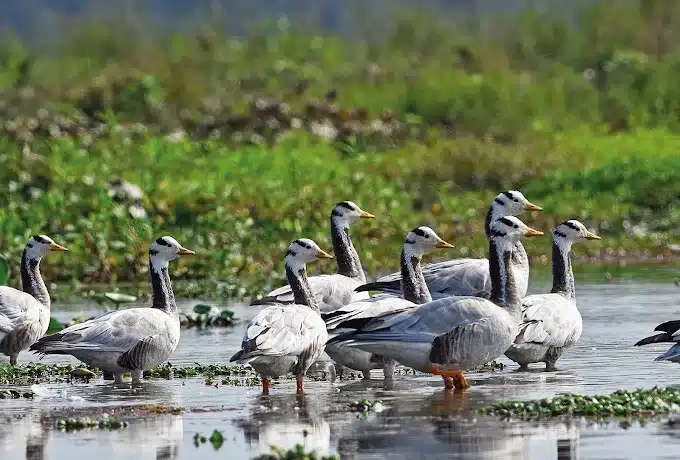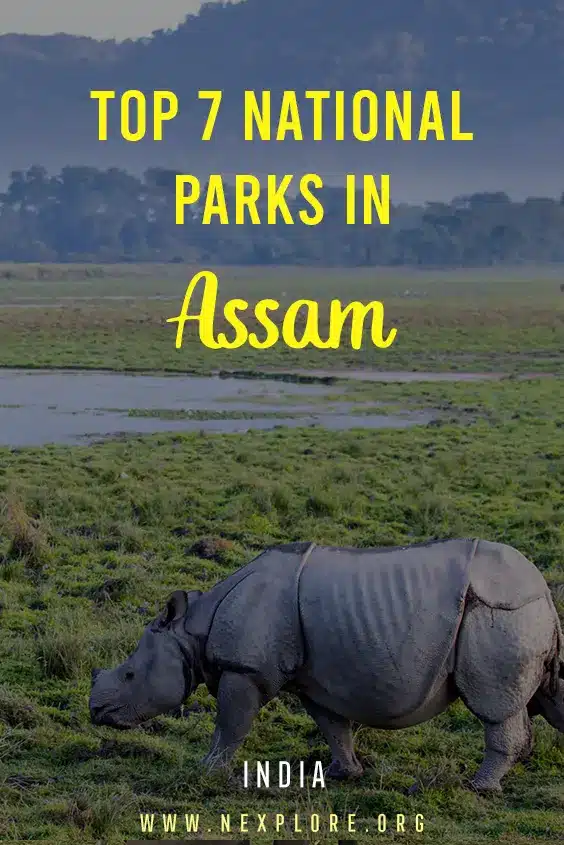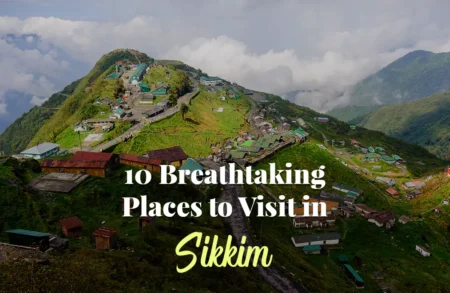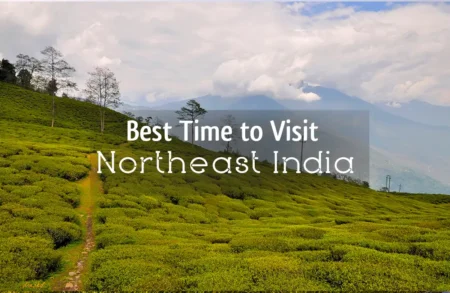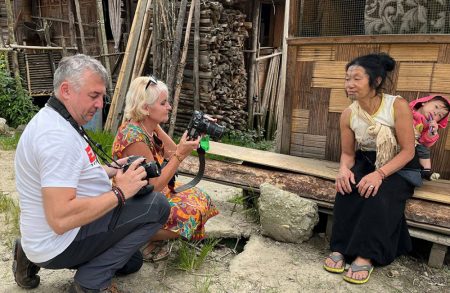Estimated reading time: 15 minutes
Assam, the gateway to the Northeast India, boasts a rich tapestry of biodiversity, sprawling landscapes, and cultural heritage. Renowned for its tea plantations and vibrant traditions, the state is also a sanctuary for nature enthusiasts. Assam is rich in biodiversity with 8 national parks and 17 wildlife sanctuaries. Each national park offers a unique blend of majestic wildlife, serene riverine ecosystems, and awe-inspiring natural beauty. In this blog, we’ll explore the top five national parks in Assam that every nature lover should visit.
From the one-horned rhinoceros to rare bird species, Assam offers an unforgettable wildlife journey for explorers from across the world. The wildlife sanctuaries in Assam and Northeast India are incredibly diverse, featuring evergreen dense forests, mangrove forests to riverine grasslands. Kaziranga and Manas National Parks are recognised as UNESCO World Heritage Sites for their rich biodiversity and conservation significance. Whether you wish to experience wildlife in its natural habitat, spot rare species or witness the beauty of migratory birds, Assam is the perfect destination for you.
From Kaziranga to Manas: Assam’s Best National Parks & Wildlife Sanctuaries

1. Kaziranga National Park
Kaziranga National Park is not just a destination—it’s a symbol of India’s wildlife conservation success. Situated on the banks of the Brahmaputra River, this park is a sprawling expanse of lush greenery, wetlands, and dense forests. What makes it truly special is its role in protecting the one-horned rhinoceros, a species that was once on the brink of extinction. Today, Kaziranga is a global icon for wildlife enthusiasts and conservationists alike, attracting thousands of visitors each year.
The park provides habitat for several species, including tiger, Asian elephant, wild water buffalo, gaur, eastern swamp deer, Sambar deer, hog deer, capped langur, hoolock gibbon, sloth bear etc. It is located in the centre of Assam on the highway that goes to Dibrugarh district from Guwahati. The area near Kaziranga has become the hub of tourism activity in Assam. It not only boosts wildlife but also hosts rural tourism, cultural tourism, adventure tourism like trekking, rafting etc.
Key Highlights:
- One-Horned Rhinoceros: The park is synonymous with this magnificent species. Spotting them grazing in the wetlands is an unforgettable experience.
- Biodiversity: Hosts over 35 mammal species, including elephants, swamp deer, and tigers, earning its designation as a Tiger Reserve.
- Avian Paradise: Over 400 bird species, including pelicans, storks, and eagles, make it a bird-watcher’s haven.
Activities:
- Jeep Safaris: Morning and afternoon safaris offer an intimate look at the park’s diverse flora and fauna.
- Elephant Rides: A unique way to explore the grasslands and wetlands.
- River Cruises: The Brahmaputra River on the park’s northern boundary adds an extra layer of allure with its serene vistas.
Idea For: Families, Wildlife enthusit, photographers
Best time to visit: Kaziranga is best visited between November and April, with the weather complementing its vibrant ecosystem.
How to reach: It is located on NH37, just 4 hours away from Guwahati, the gateway of the Northeast. Plenty of busese are available on that road whih passes through the main entrance of Kaziranga. It is convenient to board a Bus going to Jorhat/Dibrugh in the morning, and you can get off at any point in Kaziranga.
Check our Kaziranga tour package to book your thrilling trip to Kaziranga.
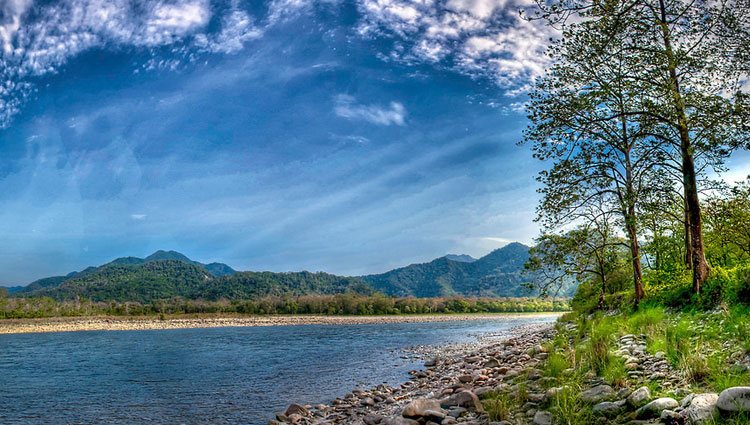
2. Manas National Park
UNESCO World Heritage Site & Biosphere Reserve
Manas National Park is one of the largest parks in India which covers an area of 39,100 hectares. It lies at the foothills of the Eastern Himalayas in the border of Bhutan. It is a blending of lush forests, open grasslands, and sparkling riverine views. The park is famous for its unique biodiversity and is a lifeline for many endangered species. It is home to tiger, leopard, civet, elephants, buffalo, pygmy hog, golden langoor, Assam roof turtle, and the Bengal florican etc. It also hosts many birds and peacocks. Its serene environment combined with opportunities for thrilling wildlife encounters, village walks, river rafting, birding etc makes it a favourite for adventure seekers and nature lovers alike.
Key Highlights:
- Golden Langur: Found only in this region, these primates are a delight to spot.
- Wildlife Diversity: Home to species like the Assam roofed turtle, pygmy hog, and hispid hare, alongside majestic Bengal tigers.
- Picturesque Landscapes: A mix of grasslands, woodlands, and rivers, including the beautiful Manas River.
Activities:
- Wildlife Safaris: Get close to the rare and endangered species of the region.
- River Rafting: Experience the thrill of rafting on the Manas River while soaking in the surrounding beauty.
- Village Tours: Engage with local Bodo tribes and experience their rich culture.
The ideal time to visit Manas National Park is between October and April, when the flora and fauna are at their peak.

3. Pobitora Wildlife Sanctuary
Pobitora is a small yet significant wildlife haven located just 50 kilometres from Guwahati, known for its high density of one-horned rhinoceroses. It is often called the “Mini Kaziranga”. Despite its small size of just 38 square kilometres, Pobitora punches above its weight in terms of biodiversity and visitor experiences. Pobitora provides an unparalleled opportunity to see the majestic one-horned rhinoceros in an intimate setting. One can enjoy an early morning elephant safari and Jeep safari at Pobitora. A large number of migratory birds come to Pobitora every year.
Pobitora and the nearby Mayong and Sonoka villages also offer boating, village walk, picnics and lots more. During winter, a large no of tourists visit Pobitora and nearby villages.
Key Highlights:
- Rhinoceros Haven: With one of the highest densities of one-horned rhinos in the world, sightings are almost guaranteed.
- Bird-Watching Delight: The wetlands attract hundreds of migratory and resident bird species, making it a paradise for birdwatchers.
- Other Wildlife: The park is also home to wild boars, leopards, and an array of reptiles.
Activities:
- Jeep Safaris: Get close to the rhinos while exploring the park’s open grasslands.
- Boat Rides: The nearby wetlands offer peaceful boat rides perfect for bird-watching.
- Photography: The breathtaking landscapes and abundant wildlife provide endless opportunities for photography.
The best time to visit Pobitora is between November to April when the weather is pleasant and wildlife activity is at its peak.

4. Nameri National Park
Nameri National Park is a peaceful retreat for those who love nature and adventure. Located at the edge of Assam and Arunachal Pradesh, this park is filled with thick forests, rivers, and rich wildlife. Its biggest draw is its vibrant bird population, making it a hotspot for birdwatchers. For visitors who enjoy the thrill of exploring raw and untouched landscapes, Nameri offers an ideal mix of trekking, rafting, and wildlife spotting. You can explore the park by trekking with an expert guide.
Key Highlights:
- Exotic Bird Species: Over 300 species of birds, including hornbills, woodpeckers, and plovers, inhabit this park.
- Floral Richness: Dense forests and water bodies create a vibrant ecosystem for diverse plant and animal species.
- Wildlife: Wild boars, elephants, and the endangered white-winged wood duck is found here.
Activities:
- River Rafting: The Jia Bhoroli River flowing through the park is perfect for rafting and spotting water birds.
- Trekking: Nature trails through dense forests offer close encounters with wildlife.
- Camping: Riverside camps allow visitors to immerse themselves in nature.
The best time to visit is from November to April, offering ideal weather for outdoor activities.
You may be interested in Assam through the lens of a bird watcher
5. Orang National Park: The Mini Kaziranga
Located on the North bank of the Brahmaputra River, Orang National Park is a smaller but equally mesmerising wildlife haven. It is only 78 sq km in size yet it offers visitors the chance to see the iconic one-horned rhinoceros in a quieter, more intimate setting than its larger counterpart. Its untouched beauty and diverse wildlife make it perfect for those seeking a less crowded yet equally thrilling wildlife experience. One can do a Jeep Safari here. One can stay at Prashaanti Tourism Complex and enjoy a relaxing time near the park.
Key Highlights:
- One-Horned Rhinoceros: Similar to Kaziranga, it shelters a significant population of this iconic species.
- Tigers and Leopards: A healthy population of big cats prowls the park.
- Bird Watching: A sanctuary for migratory birds like the Bengal florican, herons, and fishing eagles.
6. Dibru-Saikhowa National Park
Dibru-Saikhowa National Park is a unique treasure in Assam’s wildlife heritage. Unlike other parks, this park is primarily a riverine island surrounded by the Brahmaputra River, Lohit River, and Dibru River in the south. Its aquatic habitats and dense forests make it an excellent destination for bird lovers and eco-tourists. Dibru-Saikhowa is known for its peaceful, scenic environment and the chance to see rare species like the Gangetic dolphin and feral horses in their natural habitat. The forest is accessible only by a boat safari. Visitors can explore the park through boat safaris on the Dibru River or guided birdwatching tours in buffer zones. The calm setting and absence of commercial traffic make it ideal for travellers seeking an offbeat, eco-friendly experience in Assam’s wilderness.
If you are a nature lover and want to see large numbers of birds, then Magruri beel, located close to the park, is the best option for you. Dibru-Saikhowa is the starting point of the birding tour in Northeast India.
Key Highlights:
- Rare Species: The park shelters feral horses, Gangetic dolphins, and an array of avian species.
- Aquatic Beauty: Numerous wetlands and water bodies make it unique among Assam’s national parks.
- Avian Richness: Migratory birds like the bar-headed goose and white-winged wood duck visit during the winter months.
Activities:
- Boat Safaris: The rivers provide a serene way to explore the park’s beauty.
- Bird Watching: Spot rare and colourful bird species in their natural habitat.
The ideal time to visit is from November to April, ensuring favourable weather and abundant wildlife sightings.
7. Dehing Patkai National Park
Dehing Patkai National Park, also known as the “Amazon of the East,” is a tropical rainforest that feels like stepping into a different world. Located in the easternmost part of Assam in the Tinsuika district, this park is the only rainforest in the state and plays a critical role in preserving its biodiversity. Dehing Patkai’s lush rainforests are a glimpse into the raw, untouched beauty of nature.
It is home to seven different species of wild cats – tiger, leopard, clouded leopard, leopard cat, golden cat, jungle cat and marbled cat. Many arboreal species like slow loris, Assamese macaque, stump-tailed macaque, pig-tailed macaque, Rhesus monkey, capped langur and hoolock gibbon are found only in this park. You can explore the park by hiking side the forest.
Key Highlights:
- Rainforest Ecosystem: The dense foliage and towering trees create a canopy that houses a rich variety of flora and fauna.
- Wildlife Richness: Home to animals like the hoolock gibbon, slow loris, elephants, and leopards.
- Avian Diversity: Over 300 bird species, including the rare white-winged wood duck and hornbills, thrive here.
- Butterfly Paradise: This park is also famous for its vibrant butterfly population.
Activities:
- Nature Walks: Explore the pristine rainforest with guided tours that reveal its ecological wonders.
- Wildlife Spotting: Ideal for seeing unique species like the Malayan giant squirrel.
Dehing Patkai is a year-round destination, but the dry months from October to April are best for exploring its trails and wildlife.
Each of these national parks offers a unique window into Assam’s vibrant ecosystems and diverse wildlife. Whether you are an adventure seeker, bird enthusiast, or someone simply looking to reconnect with nature, Assam’s national parks cater to all.
8. Chakrashila Wildlife Sanctuary
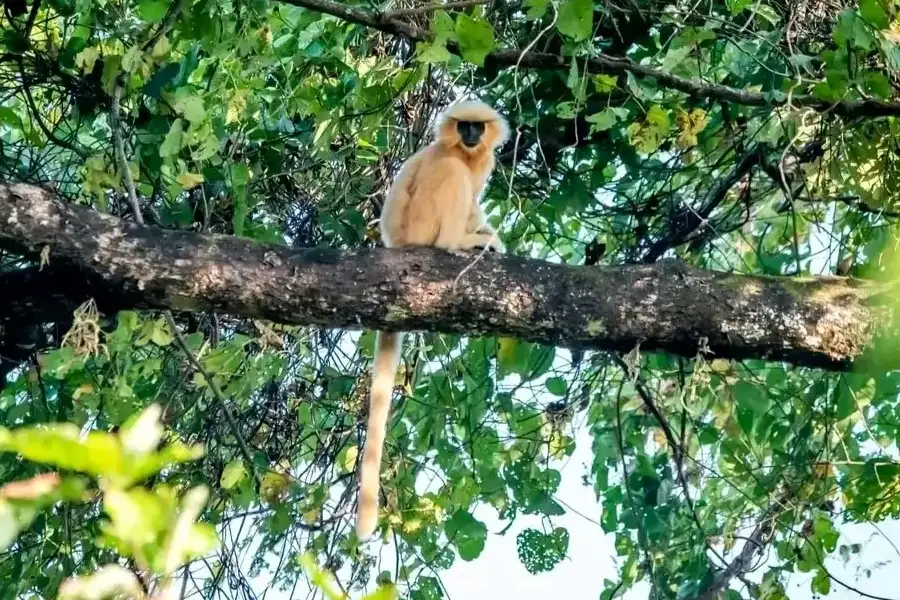
Chakrashila Wildlife Sanctuary is the newest addition to the National Parks in Assam, known for its rich greenery and unique wildlife. Spread across the districts of Kokrajhar and Dhubri, it is especially famous for being the second home of the endangered Golden Langur, a rare monkey found only in this region. The sanctuary is covered with forests, small hills, and lakes, making it a peaceful spot for nature lovers and birdwatchers. You can spot various animals, colourful birds, and butterflies while exploring the area. Chakrashila is also an important place for local communities, who help in protecting its natural beauty. It is a perfect destination for those who love wildlife, photography, and spending time in nature.
9. Hollongapar Gibbon Wildlife Sanctuary
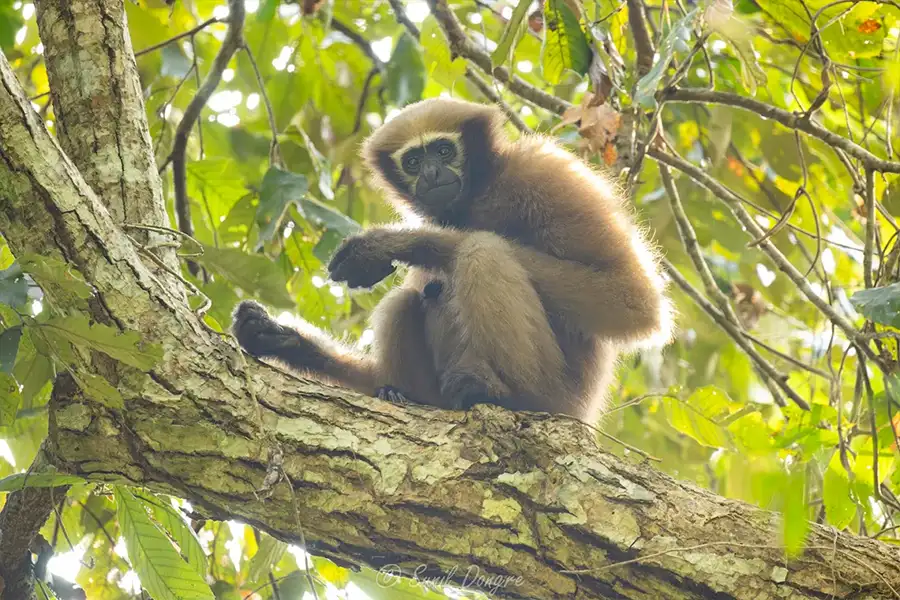
Hollongapar Gibbon Wildlife Sanctuary, located in Jorhat district of Assam, is a small but unique haven for wildlife lovers. It is best known as the only sanctuary in India dedicated to the preservation of the endangered Hoolock Gibbon, the country’s only ape species. The sanctuary is covered with lush evergreen forests dominated by tall Hollong trees, which give the place its name. Apart from the gibbons, you can also spot other fascinating animals like pig-tailed macaques, stump-tailed macaques, capped langurs, and a variety of birds, reptiles, and butterflies. The peaceful forest, filled with the sounds of chirping birds and gibbon calls, offers a magical experience for nature enthusiasts. Hollongapar is not just a place to see wildlife, but also a reminder of the importance of protecting our natural treasures.
A few more notable wildlife sanctuaries in Assam are Deepor Beel Wildlife Sanctuary, Bura Chapori Wildlife Sanctuary, Sonai Rupai Wildlife Sanctuary, Garampani Wildlife Sanctuary, Bornadi Wildlife Sanctuary, which are also home to many migratory birds and wild animals.
❓ Frequently Asked Questions (FAQ)
1. What is the best time to visit national parks in Assam?
The best time to visit is from November to April, when the weather is pleasant and the parks are open. Monsoon months (July – September) are closed due to heavy rainfall and flooding.
2. Which national park is famous for the one-horned rhinoceros?
Kaziranga National Park is home to two-thirds of the world’s population of the great Indian one-horned rhinoceros. Apart from this, Pobitora Wildlife Sanctuary is another home to a large number of rhinos. Manas and Orang National Park also hold a good population of rhinos.
3. How can I reach Kaziranga and Manas from Guwahati?
Kaziranga is about 5 hours by road from Guwahati. Manas National Park is around 3 – 4 hours. Private cabs, shared taxis, and state transport buses are available for both parks.
4. Are safaris safe for families and foreign tourists?
Yes. Licensed forest departments and trained guides conduct all safaris. Follow the park rules, maintain silence, and cooperate with the driver and mahout during the safari.
5. How many days are ideal for an Assam wildlife tour?
A minimum of 5 to 7 days is ideal to cover Kaziranga, Manas and Nameri. For a longer experience, you can extend to include Dibru-Saikhowa National Park.
6. Is photography allowed inside the parks?
Yes. Photography is encouraged, but follow the park’s ethical guidelines — no flash or loud noises around animals.
7. Which is the best national park to watch migratory birds in Assam, and
If you are a birdwatcher or nature photographer, Dibru-Saikhowa National Park is the best place in Assam to see migratory and rare bird species. Located in the Tinsukia district of Upper Assam, this park lies on the floodplains of the Brahmaputra and Lohit Rivers, creating a unique blend of wetlands, grasslands, and forests that attract hundreds of migratory birds every winter. Apart from this, Kaziranga and Nameri National Park also host a large number of migratory birds each year.
8. Is Dibru Saikhowa worth visiting? Why is it different?
It is a riverine forest; only boat safaris are available in the park. It it’s one of the few biosphere reserves in Northeast India, which is the home to both aquatic and terrestrial ecosystems. You can spot species like the Falcated Duck, Baer’s Pochard and Swamp Francolin along with feral horses roaming freely — a rare sight in Indian national parks.
🌿 Travel Advisory for Tourists Visiting Assam’s National Parks
1. Park Entry and Permits
-
All national parks require entry permits and safaris must be booked in advance from Govt website or through authorised guides or agencies.
-
Foreign tourists should carry valid ID and passport copies.
2. Health & Safety
-
Carry mosquito repellent, sunscreen, and basic medicines.
-
Drink only bottled or filtered water.
-
Wear neutral-coloured clothing (no bright colours) to blend with surroundings during safaris.
-
Always follow the forest guide’s instructions for your safety.
3. Sustainable Tourism Guidelines
-
Avoid littering; use reusable water bottles.
-
Respect wildlife – keep a safe distance and avoid loud noises.
-
Support local communities by buying locally made handicrafts or staying in eco-lodges.
4. Weather & Clothing
-
November–February: Pleasant, mild cold. Carry light woollens.
-
March–April: Warm and dry; cotton clothes are comfortable.
-
Avoid monsoon months (May–October) as parks remain closed.
5. Connectivity & Money
-
Most lodges accept cards and UPI, but carry some cash for rural areas.
-
Mobile networks like Jio and Airtel work well in major areas but may be weak inside forest zones.
Want to experience a Wildlife tour in Assam with an expert guide?
Join our expertly curated Assam Wildlife Tour — covering Kaziranga, Nameri, and Manas with comfortable stays, guided safaris, and authentic local experiences. If you need our help to plan a customised wildlife tour, write to us for details.
👉 Explore Our Wildlife Packages


